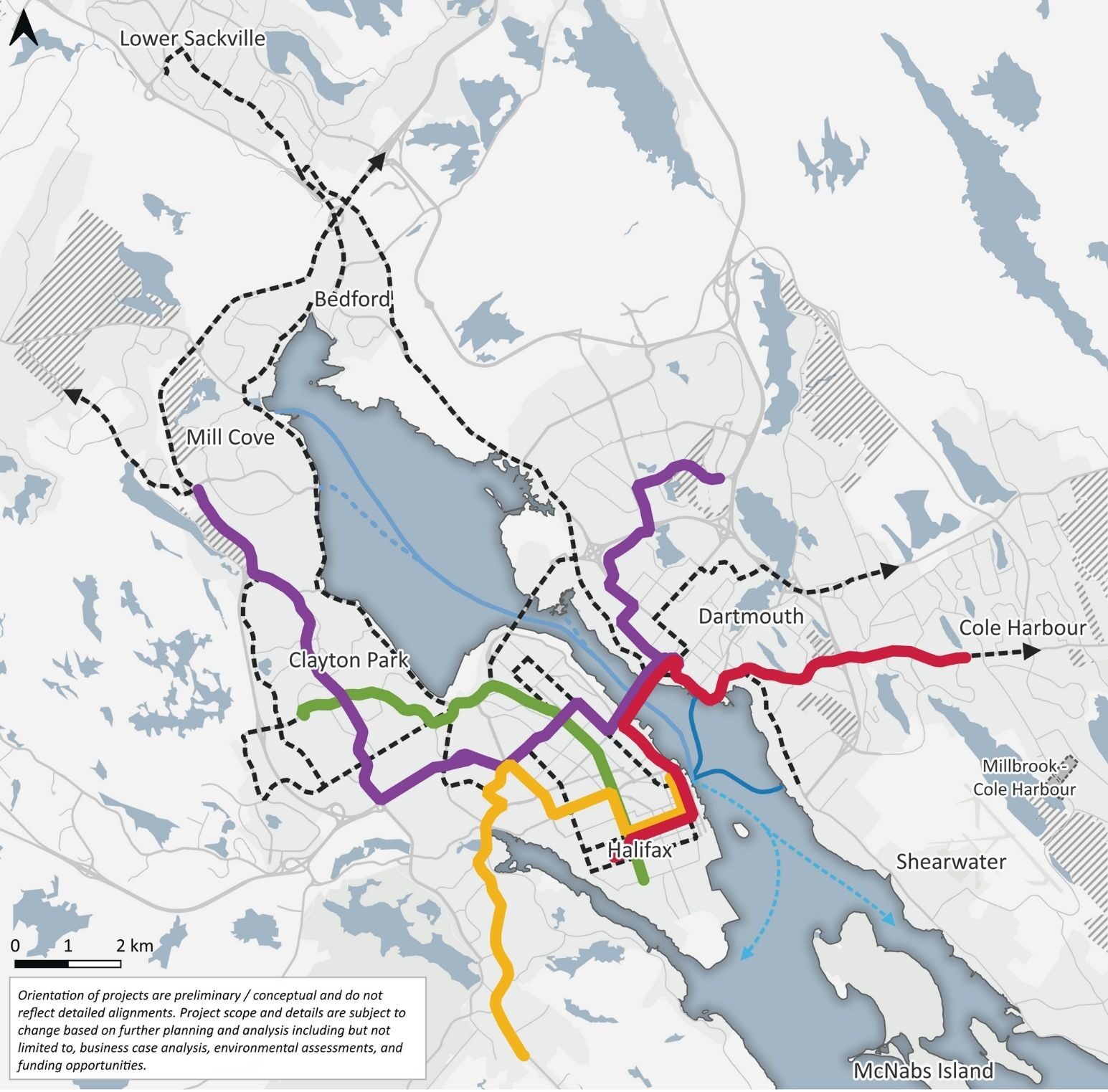Action 1.3.2: Implement Rapid Transit service and the associated infrastructure it requires (e.g., transit lanes, transit stations and terminals, and maintenance & operations facilities).
Fast, frequent, and reliable rapid transit service (Bus Rapid Transit [BRT] and additional high-speed ferry service) in densely populated areas is needed to support the province’s growth and development, move more people more efficiently, reduce the cost of travel, increase access to jobs / expand the labour market, and support broader goals to reduce GHG emissions. Additional ferry service includes Mill Cove (funded) and Shannon Park, and longer-term potential routes including Larry Uteck, Purcells Cove, and Eastern Passage. Opportunities to increase ferry crossing frequency on existing routes, to provide maximum service efficiency will also be explored.
Goal 1 | Strengthen Regional Connections
Strategy 1.3 | Build an Integrated Transit Network
Challenges Addressed



Benefits
- Move more people within urban corridors more efficiently, increase network capacity, and reduce the cost of travel.
- Improve overall mobility for Nova Scotians, supporting increases in economic productivity in urban regions.
- Connect major housing growth and provincially approved Special Planning Areas to key locations where people work, go to school, and access every day services.
Status
The Province is assisting HRM in acquiring land along the Robie Street corridor, conducting a passenger rail feasibility study for the Halifax region, and preparing to initiate several corridor reviews. These actions support future implementation of a Bus Rapid Transit network.


